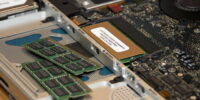How To Choose The Right Graphics Card For Your Pc Gaming Needs
The selection of a suitable graphics card for PC gaming is crucial in ensuring optimal performance and immersive gameplay. With the constant advancements in technology, it becomes increasingly challenging to navigate through the multitude of options available on the market. This article aims to provide readers with an objective and impersonal guide on choosing the right graphics card for their specific gaming needs.
To begin, understanding graphics card specifications is essential, as it allows users to make informed decisions based on their budget and performance requirements.
Furthermore, researching compatibility with one’s PC ensures seamless integration and avoids potential compatibility issues.
Considering factors such as VRAM and memory bandwidth contributes to overall gaming experience. Comparing brands and models aids in determining which option best suits individual preferences.
Moreover, evaluating cooling mechanisms and power requirements helps prevent overheating issues.
Lastly, reading reviews and customer feedback provides valuable insights from real-life experiences.
By following these guidelines, readers can confidently select a graphics card that enhances their PC gaming endeavors while staying within budgetary constraints.
Key Takeaways
- Understanding graphics card specifications is crucial for making informed decisions based on budget and performance requirements.
- Researching compatibility with your PC is essential to ensure optimal performance and functionality.
- Comparing different brands and models helps assess performance, reliability, and compatibility.
- Reading reviews and customer feedback provides valuable insights into the performance, features, and user satisfaction of different graphics cards.
Understanding Graphics Card Specifications
One crucial aspect in the process of selecting an appropriate graphics card for your PC gaming requirements is gaining a comprehensive understanding of various graphics card specifications. These specifications play a vital role in determining the performance and compatibility of the graphics card with your system.
The first specification to consider is the GPU, or Graphics Processing Unit, which is responsible for rendering images and videos. Different GPUs have varying capabilities, such as clock speed and memory size, which directly impact their performance.
Memory type and bandwidth are also important considerations as they affect how quickly data can be transferred within the graphics card. Additionally, power consumption and cooling solutions should be evaluated to ensure that the chosen graphics card can operate efficiently without overheating.
By carefully examining these specifications, you can make an informed decision when choosing a graphics card that meets your specific gaming needs.
Determining Your Budget and Performance Requirements
To determine the appropriate graphics card for your desired gaming experience, it is crucial to establish a budget and clearly define your performance requirements.
Setting a budget helps narrow down the options available within your financial constraints. Consider how much you are willing to invest in a graphics card and ensure that it aligns with the overall affordability of your PC setup.
Additionally, defining your performance requirements is essential as it determines the level of graphical fidelity and smoothness you expect from your games. Factors such as resolution, frame rate, and specific game titles should be considered when determining these requirements.
By carefully considering both your budget and performance needs, you can make an informed decision when choosing the right graphics card for your PC gaming needs.
Researching Graphics Card Compatibility with Your PC
Researching the compatibility of graphics cards with your computer system is a crucial step in ensuring optimal performance and functionality, evoking a sense of confidence in the audience.
To determine if a graphics card is compatible with your PC, consider the following factors:
-
Motherboard Compatibility: Check if the graphics card’s interface (PCIe) matches the available slots on your motherboard. Additionally, ensure that your power supply has enough wattage to support the new graphics card.
-
System Requirements: Review the recommended system requirements for the graphics card and compare them with your PC’s specifications. Consider factors such as CPU speed, RAM capacity, and operating system compatibility.
-
Space and Cooling: Measure the physical dimensions inside your PC case to ensure there is enough space for installation. Additionally, check if your current cooling system can handle any additional heat generated by the new graphics card.
By conducting thorough research on these compatibility aspects, you can make an informed decision when selecting a suitable graphics card for your gaming needs.
Considering VRAM and Memory Bandwidth
Considering the VRAM capacity and memory bandwidth of a graphics card is crucial in determining its ability to handle demanding visual tasks and optimize overall system performance. VRAM, or Video Random Access Memory, is a type of dedicated memory that stores data for the GPU to process. It directly affects the card’s ability to render high-resolution textures and handle complex scenes with ease. On the other hand, memory bandwidth refers to how quickly data can be transferred between the GPU and VRAM. A higher memory bandwidth allows for faster data transfer rates, resulting in smoother gameplay and reduced loading times. When choosing a graphics card, it is essential to strike a balance between sufficient VRAM capacity and adequate memory bandwidth for optimal gaming experience.
| Graphics Card | VRAM Capacity | Memory Bandwidth |
|---|---|---|
| GTX 1660 | 6GB | 192 GB/s |
| RTX 2080 Ti | 11GB | 616 GB/s |
| RX 5700 XT | 8GB | 448 GB/s |
Table: Comparison of VRAM capacity and memory bandwidth among popular graphics cards.
Note: The values provided are just examples and may vary depending on different models or manufacturers.
Comparing Graphics Card Brands and Models
When comparing different brands and models of graphics cards, it is crucial to assess their performance, reliability, and compatibility to make an informed decision that maximizes gaming experience. Each brand offers a variety of models with varying specifications and features.
It is essential to consider the reputation and track record of the brand in terms of customer satisfaction and support. Reviews from reputable sources can provide valuable insights into the performance and reliability of specific models.
Compatibility with your existing system components, such as motherboard and power supply, should also be taken into account. Additionally, considering factors like cooling solutions, noise levels, and power consumption can help determine the suitability of a particular graphics card for your gaming needs.
Ultimately, thorough research and careful consideration are necessary when comparing graphics card brands and models to ensure optimal performance for PC gaming.
Evaluating Cooling and Power Requirements
Evaluating the cooling solutions and power requirements of different graphics card models is essential for ensuring efficient heat dissipation and adequate power supply, thereby optimizing performance and longevity.
To effectively evaluate these aspects, consider the following:
-
Cooling system: A robust cooling solution, such as a dual or triple fan design, can efficiently dissipate heat generated by the graphics card during intensive gaming sessions.
-
Thermal design power (TDP): This specification indicates the amount of power consumed by the graphics card under typical usage conditions. It helps determine the minimum power supply required to support stable operation.
-
Power connectors: Graphics cards often require additional power from the PSU through dedicated connectors. Ensure your power supply unit has compatible connectors and sufficient wattage to meet the demands of your chosen GPU.
-
Overclocking potential: Consider whether you plan to overclock your graphics card. In such cases, it is crucial to have ample cooling capabilities and a robust power supply to handle any increased load.
-
Compatibility with PC case: Check if your chosen graphics card fits comfortably within your PC case without obstructing airflow or causing compatibility issues.
By carefully evaluating these factors, you can choose a graphics card that offers optimal cooling efficiency and meets your specific power requirements.
Reading Reviews and Customer Feedback
To gain insights into the performance and reliability of different graphics card models, it is valuable to delve into reviews and customer feedback. Reading reviews allows potential buyers to understand the experiences of other users with a particular graphics card model, giving them a more comprehensive understanding of its pros and cons. Customer feedback provides an opportunity to assess the overall satisfaction level and identify any recurring issues or concerns. By analyzing multiple reviews and feedback, consumers can make informed decisions about which graphics card best suits their needs.
| Pros | Cons | Overall Rating |
|---|---|---|
| Excellent performance | High power consumption | 4.5/5 |
| Effective cooling system | Expensive | 4/5 |
| Easy installation | Limited availability | 3.5/5 |
This table highlights some key factors mentioned in reviews that are crucial for evaluating graphics cards. It serves as a concise summary of the strengths, weaknesses, and overall rating provided by customers, assisting potential buyers in making an informed decision based on others’ experiences.
Making an Informed Decision
In order to make an informed decision regarding the selection of a suitable graphics card, it is imperative to carefully analyze and consider the insights obtained from reviews and customer feedback.
Reviews provide valuable information about the performance, features, and compatibility of different graphics cards. They can offer detailed comparisons between various models, highlighting strengths and weaknesses.
Customer feedback further complements these reviews by providing real-world experiences with specific graphics cards. By considering both positive and negative feedback, potential buyers can gain a comprehensive understanding of a particular card’s reliability, durability, and overall user satisfaction.
It is important to keep in mind that individual needs may vary; therefore, while reviews and customer feedback are crucial resources for decision-making, they should be used as part of a broader research process that takes into account personal requirements such as budget constraints and intended usage scenarios.
Frequently Asked Questions
Can I use a graphics card from a different brand than my current one?
Yes, it is generally possible to use a graphics card from a different brand than your current one. However, compatibility issues may arise due to different hardware configurations and software requirements. It is advisable to check specifications and consult manufacturer guidelines before making a purchase.
What is the difference between VRAM and regular RAM?
VRAM, or video random access memory, is a specialized type of RAM that is dedicated to storing and accessing graphical data. Unlike regular RAM, VRAM is optimized for handling large amounts of high-resolution graphics in real-time, making it essential for gaming and other graphics-intensive applications.
How do I know if my power supply is compatible with a new graphics card?
To determine if a power supply is compatible with a new graphics card, one should consider the card’s power requirements and compare them to the power supply’s specifications, including its wattage and available connectors.
Are all graphics cards compatible with all motherboards?
Not all graphics cards are compatible with all motherboards. Compatibility depends on factors such as the motherboard’s slot type (PCIe, AGP) and power requirements, which must match the graphics card’s specifications for successful installation and usage.
How important is the cooling system on a graphics card?
The cooling system on a graphics card is crucial as it helps dissipate heat generated by the GPU. Efficient cooling ensures optimal performance and longevity of the card, preventing overheating and potential damage to other components.







